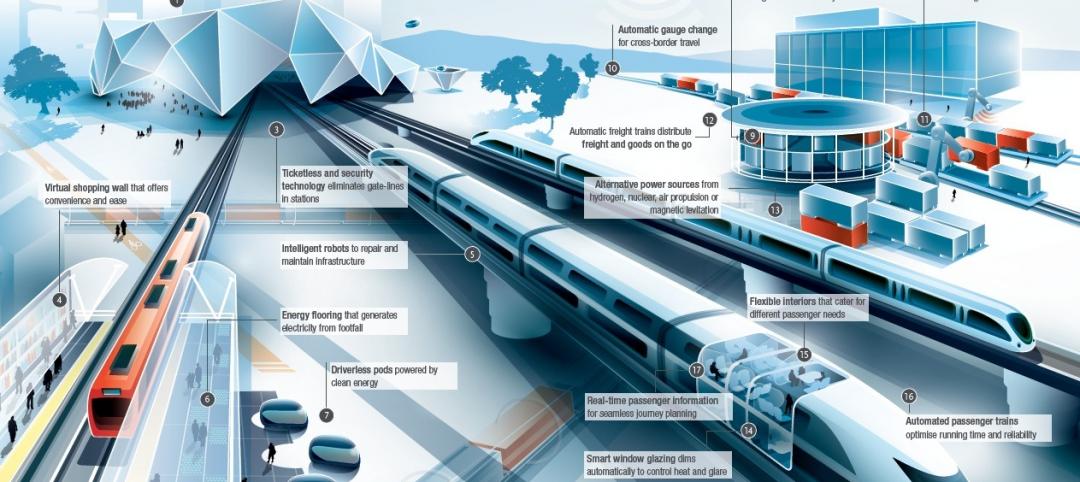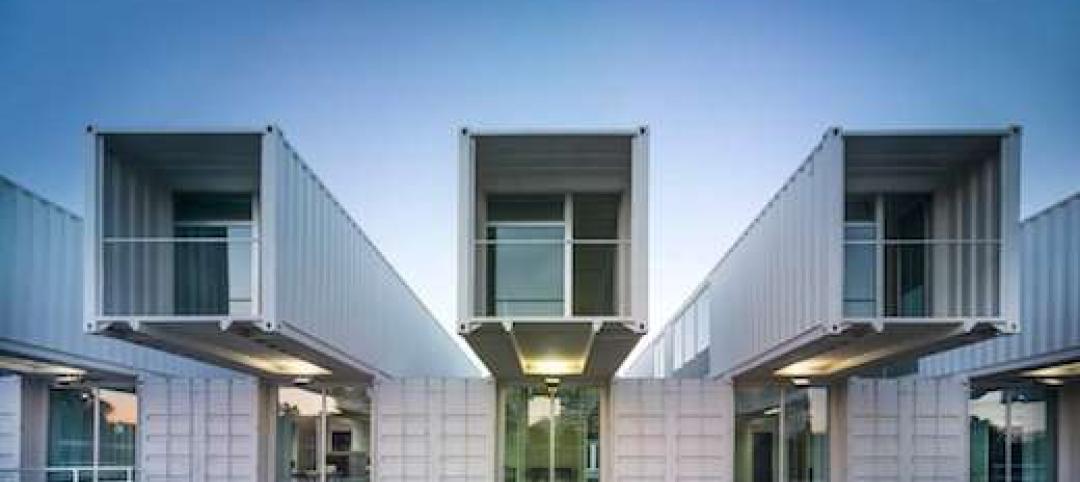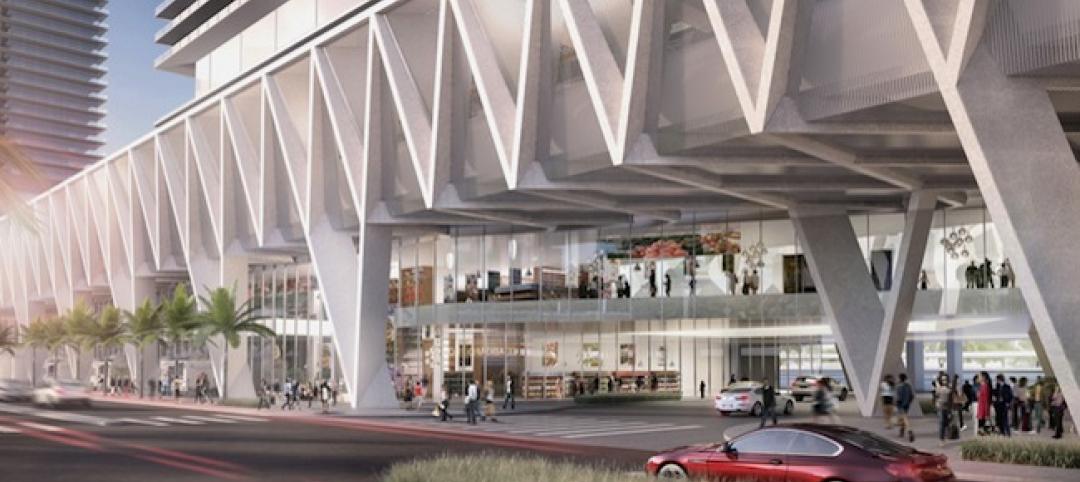Foster + Partners’ plan for the Ourense FFCC Station in Galicia, Spain is to bring together high-speed rail and bus stations in a major urban intervention. This will open pedestrian links between the districts on either side of the tracks and create a new public plaza for the city.
The existing railway line is being upgraded to accommodate high-speed rail links in the region, something the recently revealed design takes into consideration. The plans call for a new station that caters to the increased passenger numbers created by the high-speed rail and creates a framework for a new transport interchange. Included in the new terminal will be a direct connection with the adjacent bus terminal, a new urban square in front of the station, and a pedestrian walkway and public park over the tracks.
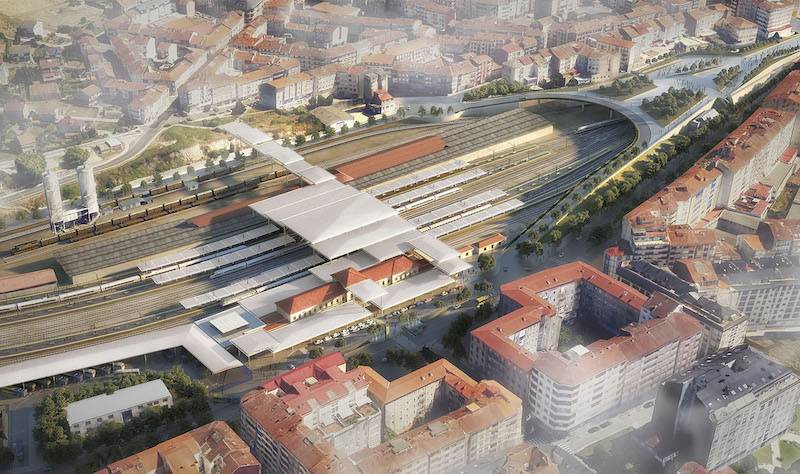 Rendering courtesy of Foster + Partners.
Rendering courtesy of Foster + Partners.
The addition will be made from concrete plates and slender columns that match the color of the existing station’s granite. The new concrete plates will provide shelter from rain and high temperatures common to the area’s summers. The roofs are designed as a modular system requiring minimal maintenance with the capability of accommodating future expansions.
A new portico highlights the entry canopy and will feature cafés and shops. The front of the station will spill directly onto a new urban square. Meanwhile, the internal lobby will be reconfigured to create a space filled with natural light and triple-height ceilings. Historic frescoes on the upper portions of the walls are being retained and restored.
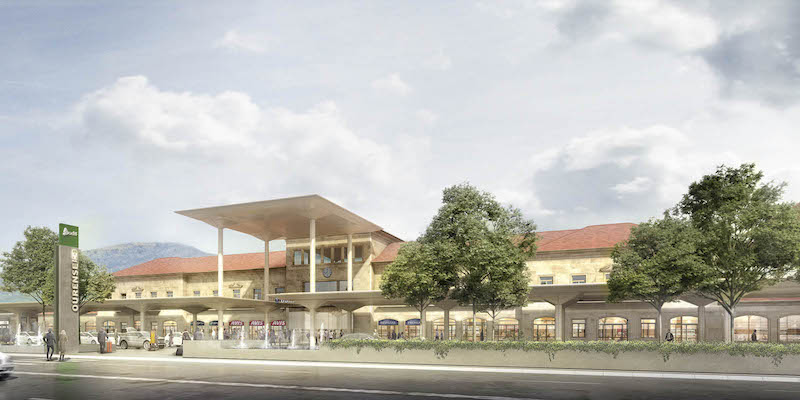 Rendering courtesy of Foster + Partners.
Rendering courtesy of Foster + Partners.
Wayfinding through the station has been improved via clear visual connections from the check-in stations to the trains. Additionally, a direct internal connection to the bus station creates an easy link to the city and surrounding area.
Related Stories
| Jun 30, 2014
Research finds continued growth of design-build throughout United States
New research findings indicate that for the first time more than half of projects above $10 million are being completed through design-build project delivery.
| Jun 30, 2014
Arup's vision of the future of rail: driverless trains, maintenance drones, and automatic freight delivery
In its Future of Rail 2050 report, Arup reveals a vision of the future of rail travel in light of trends such as urban population growth, climate change, and emerging technologies.
| Jun 18, 2014
Arup uses 3D printing to fabricate one-of-a-kind structural steel components
The firm's research shows that 3D printing has the potential to reduce costs, cut waste, and slash the carbon footprint of the construction sector.
| Jun 12, 2014
Austrian university develops 'inflatable' concrete dome method
Constructing a concrete dome is a costly process, but this may change soon. A team from the Vienna University of Technology has developed a method that allows concrete domes to form with the use of air and steel cables instead of expensive, timber supporting structures.
| Jun 6, 2014
Shipping container ship terminal completed in Spain
In Seville, Spain, architectural firms Hombre de Piedra and Buró4 have designed and completed a cruise ship terminal out of used shipping containers.
| Jun 2, 2014
Parking structures group launches LEED-type program for parking garages
The Green Parking Council, an affiliate of the International Parking Institute, has launched the Green Garage Certification program, the parking industry equivalent of LEED certification.
| Jun 2, 2014
SOM unveils plans for Miami transit hub
The elevated station will be a key portal within All Aboard Florida’s rail system, the nation's only privately owned, operated, and financed rail network.
| May 29, 2014
7 cost-effective ways to make U.S. infrastructure more resilient
Moving critical elements to higher ground and designing for longer lifespans are just some of the ways cities and governments can make infrastructure more resilient to natural disasters and climate change, writes Richard Cavallaro, President of Skanska USA Civil.
| May 20, 2014
Kinetic Architecture: New book explores innovations in active façades
The book, co-authored by Arup's Russell Fortmeyer, illustrates the various ways architects, consultants, and engineers approach energy and comfort by manipulating air, water, and light through the layers of passive and active building envelope systems.
| May 19, 2014
What can architects learn from nature’s 3.8 billion years of experience?
In a new report, HOK and Biomimicry 3.8 partnered to study how lessons from the temperate broadleaf forest biome, which houses many of the world’s largest population centers, can inform the design of the built environment.




